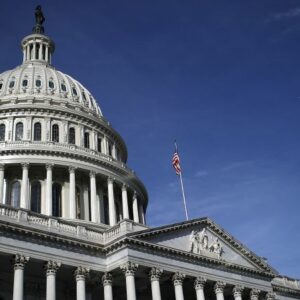Insider’s experts choose the best products and services to help make smart decisions with your money (here’s how). In some cases, we receive a commission from our our partners, however, our opinions are our own. Terms apply to offers listed on this page.
If you’re having trouble saving toward your future goals, finding the right place to stash your money might be the key to changing your habits once and for all.
For long-term goals, like retirement, investing your money is best — you have enough time to weather ups and downs in the market. But keeping money you need in the next couple of years — like your emergency fund or travel money — in a brokerage account just isn’t wise, since your money can lose value in the short term and you may have to pay a higher tax rate to withdraw your funds.
For short-term goals, choose a high-yield savings account, says financial planner Spencer Betts.
At the moment, high-yield savings accounts have interest rates of up to 3% or more compared to 0.16% for a typical bank savings account (though rates go up and down). The higher interest rate can make a huge difference in your saving mindset because you can watch your savings grow, Betts says. They’re also typically easy to open online, often with no minimum deposit required.
Another plus, even if it doesn’t seem like it: High-yield savings accounts limit how many times you can withdraw from your account.
Says Betts, “An account that has some restrictions is a good thing, mentally, so you’re not tapping into those funds for going out to eat.” Federal law allows you to withdraw from your account six times each month, which keeps your cash easily accessible, but withdrawing from it the same way you would a checking account may cost you extra in fees.
Here are three situations where Betts says you should definitely keep your cash in a high-yield savings account.
1. Building an emergency savings fund
“Usually you want three to six months of living expenses set aside someplace,” says Betts. “That includes unexpected repairs for the house, or, if you get laid off, some cash to get you through in between.”
Using a high-yield savings account is a great way to let that money grow while you’re stashing it away for an emergency.
2. Creating a travel budget
Betts advises his clients to use a high-yield savings account to save up for their travels. Seeing the extra bump each month from the higher interest rate can motivate you to put a little more each month into your savings account.
3. Paying down debt
Experts recommend only keeping three to six months in a high-yield savings account for emergencies. Any excess savings should be put toward debt repayment or investing.
If you have a debt payoff goal on the horizon, but still want to hold onto that money in case of emergencies in the meantime, Betts says using a high-yield savings account is smart — you can build up some extra cash to put towards your debt or treat yourself once the debt is paid off.













Christmas trees, an article for professionals